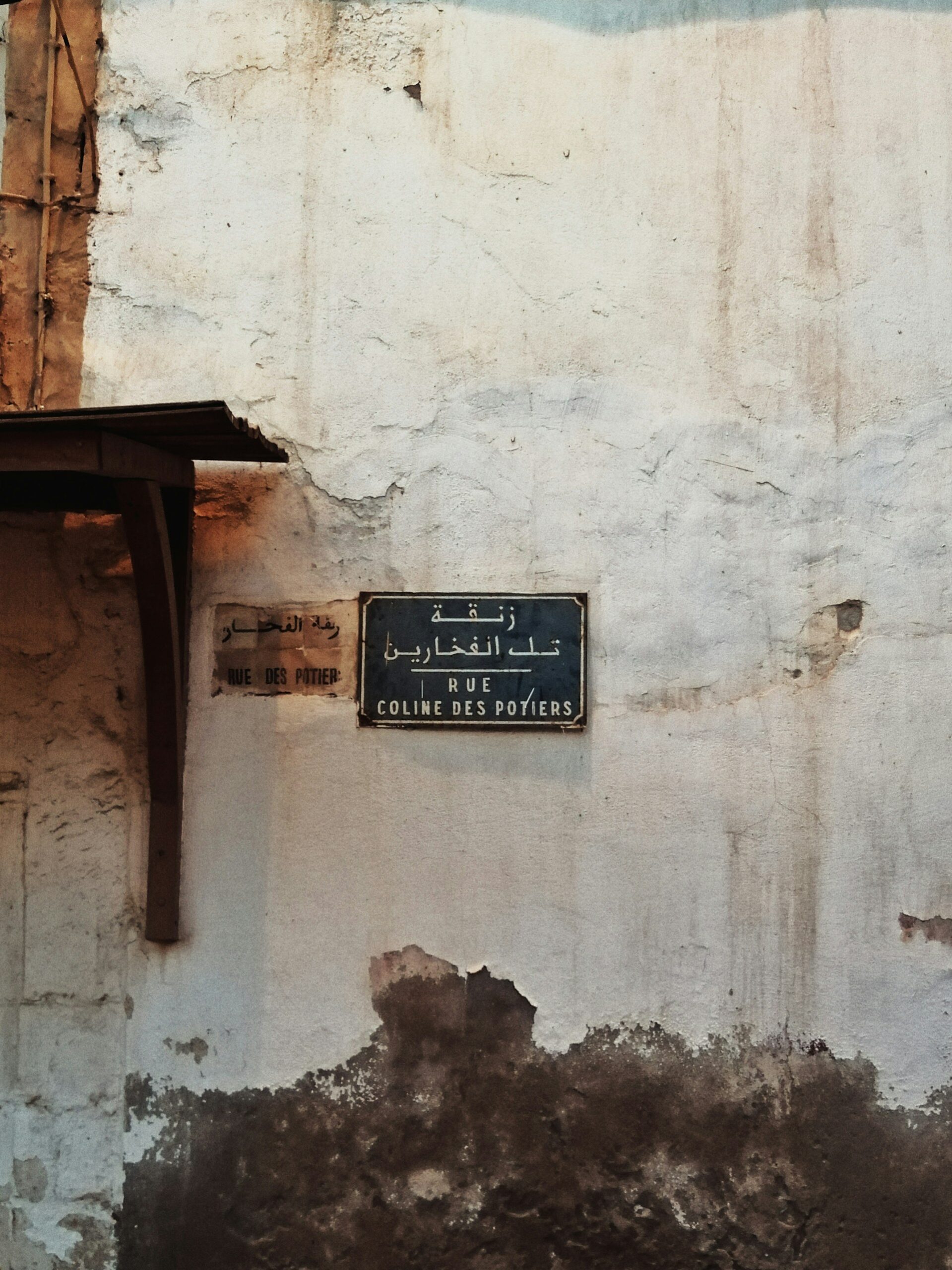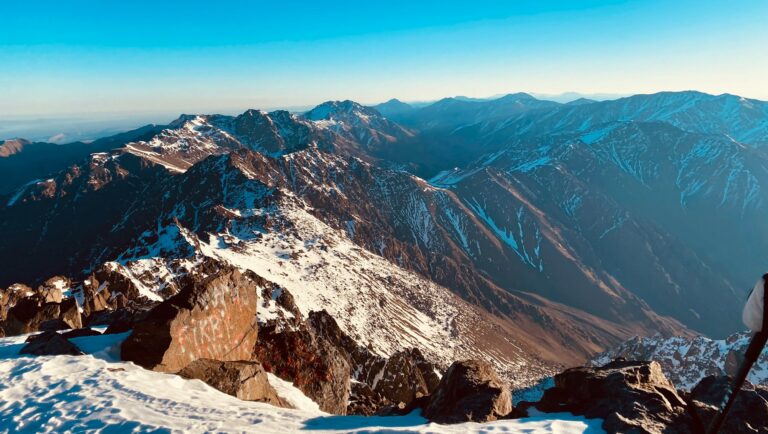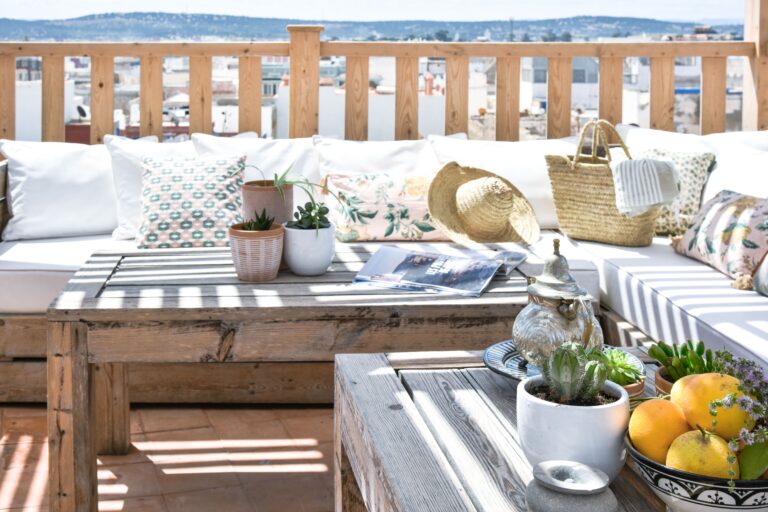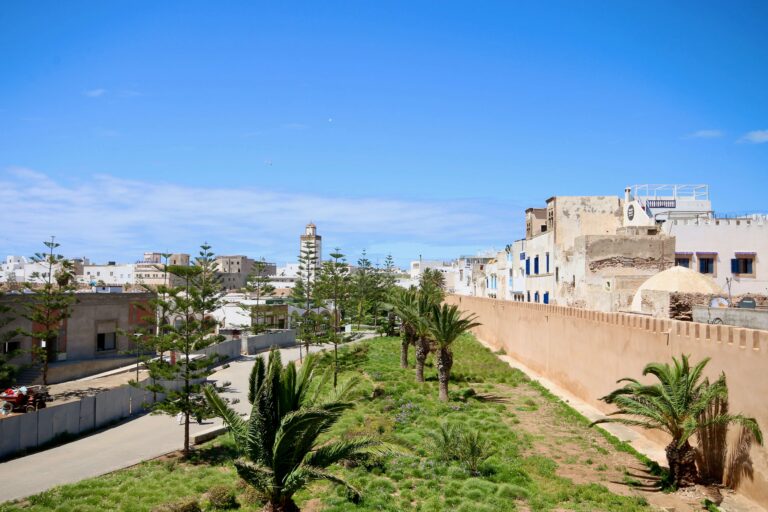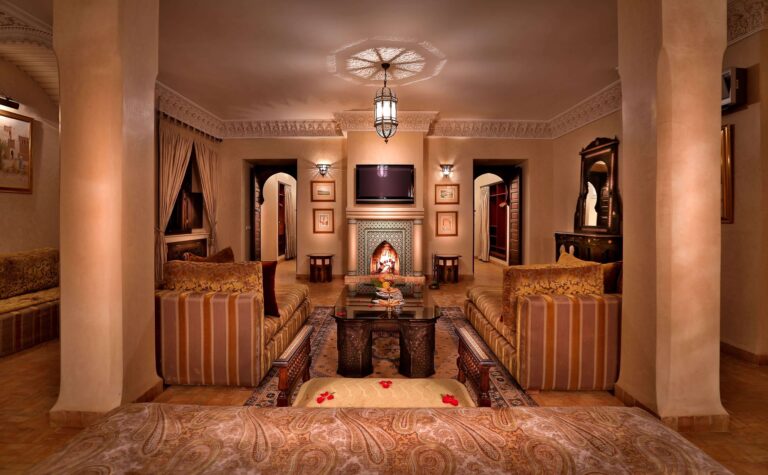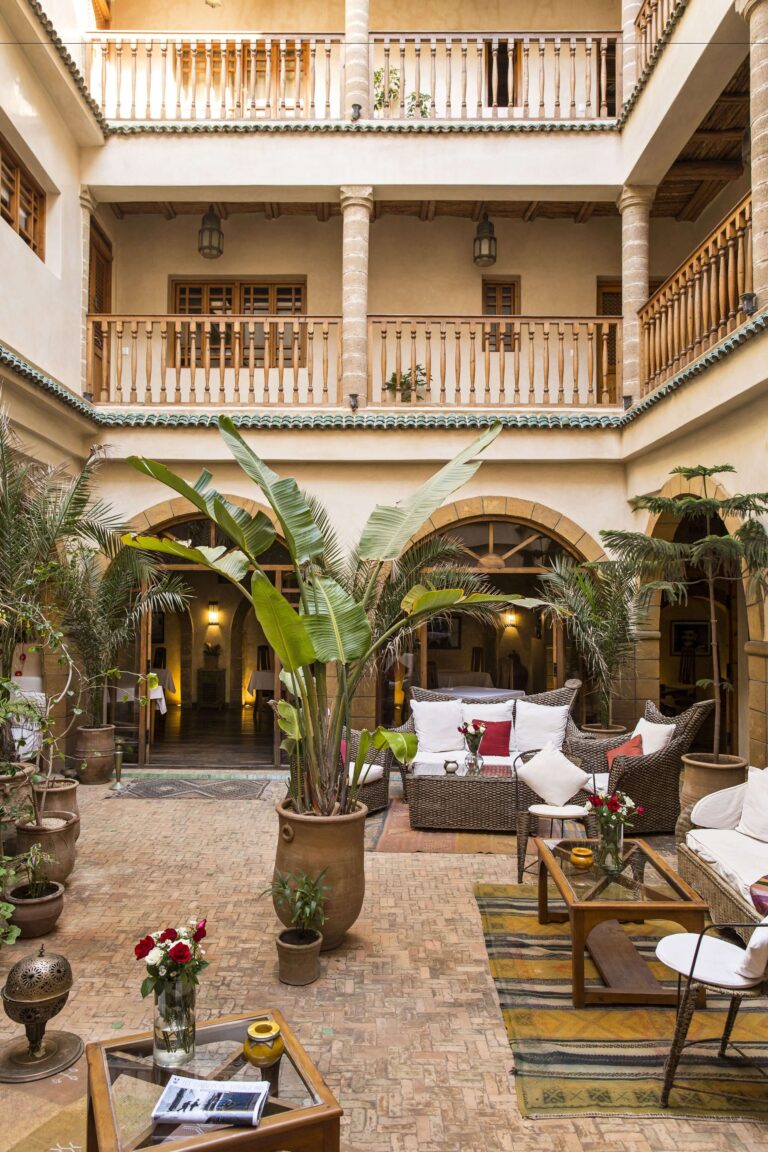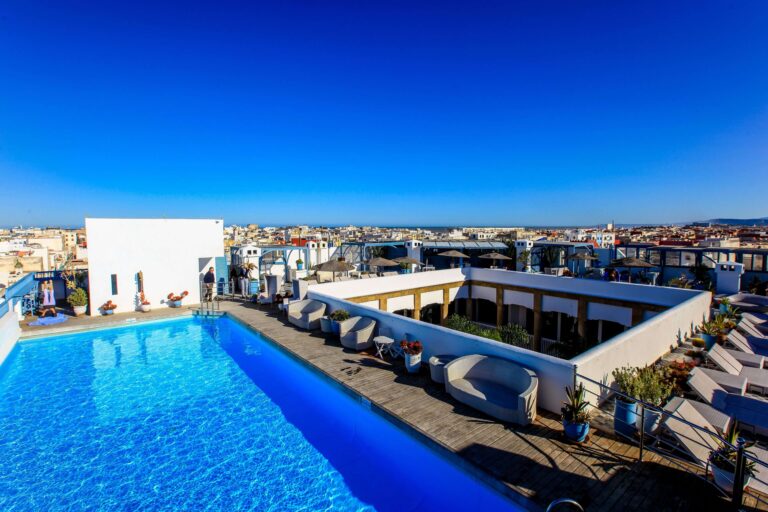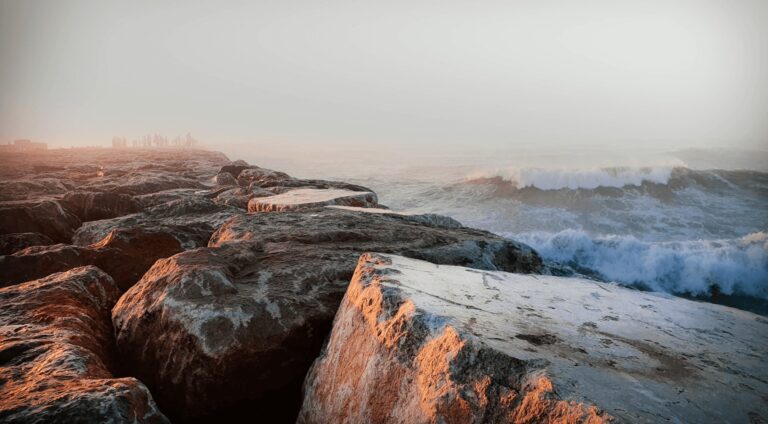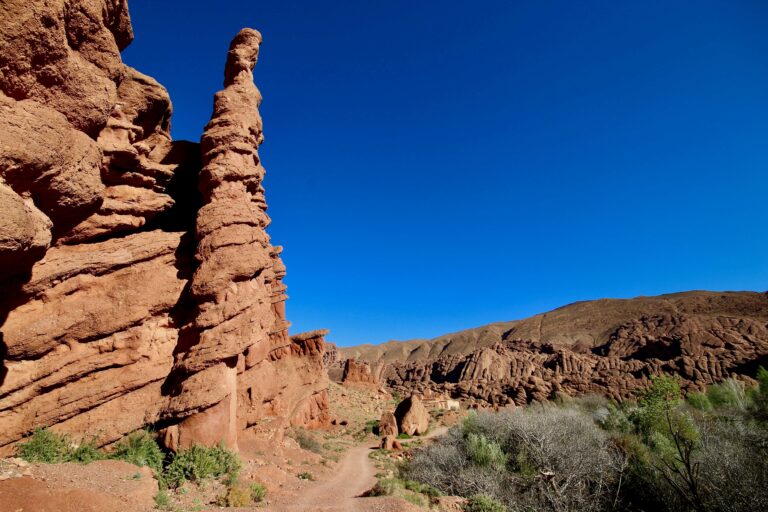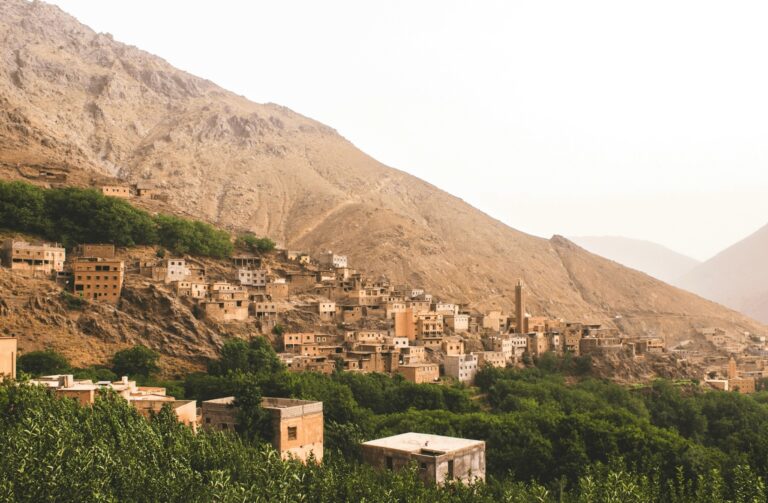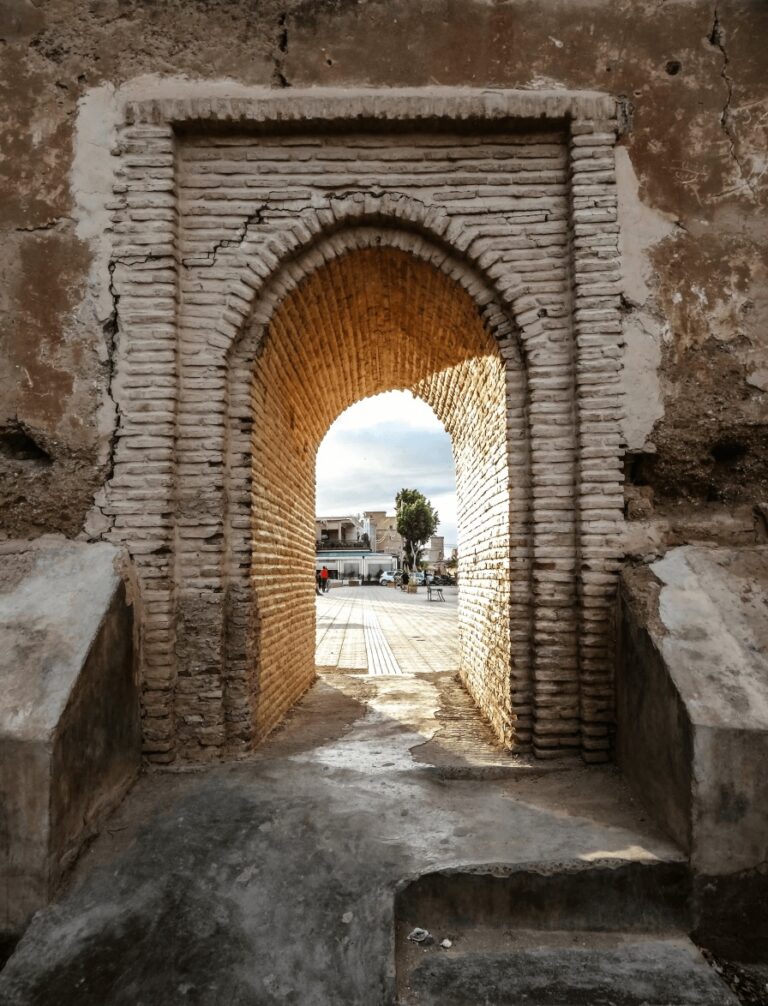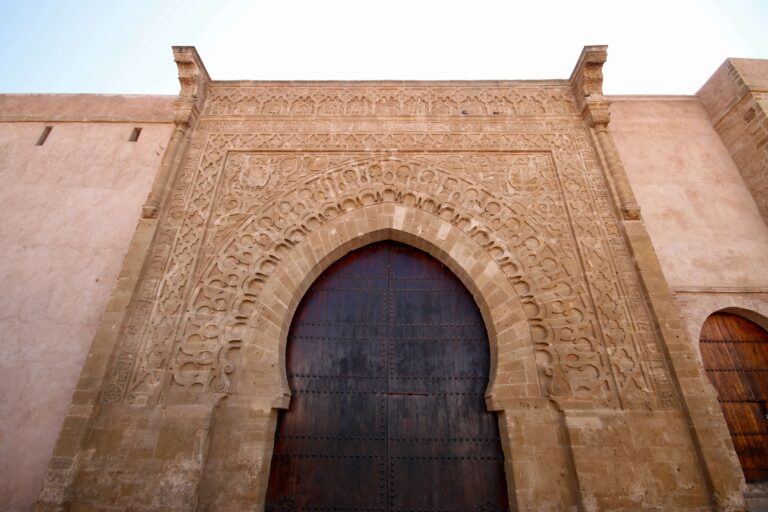Essential Travel Guide to Safi: Morocco’s Ceramics Heartland
Looking for the best things to do in Safi or highly recommended places to stay? Discover the ideal time to visit, tips for getting around and the best tours in this essential travel guide to Safi.
Located halfway between the seaside cities of El Jadida and Essaouira, Safi is a historic coastal city that remains somewhat unknown amongst international tourists. Moroccans are well aware of Safi due to the exceptional craftsmanship and artistry of its ceramicists. But there’s a lot more to discover here.
Safi’s history dates back to at least the 12th century when it was already established as an important port on the Atlantic coast. It was occupied by the Portuguese from 1488 to 1541. Over time, it became known for the quality of its weaving and as a sardine fishery.
Allied forces landed in Safi during World War II as part of Operation Blackstone, which saw American soldiers occupy the French-held port.
Today, Safi is most well-known for its Potters’ Quarter. Here, you can witness skilled artisans handcrafting the vibrantly-coloured pottery for which the city is renowned.
That being said, it is a bustling industrial city. So don’t expect the historic charm of Essaouira or El Jadida. For some, it’s the grittiness and authenticity of Safi that is all part of its appeal.
In this Essential Travel Guide to Safi, discover the top things to see and do in the city, as well as inspiring places to stay and the best time to visit.

Disclosure: This article contains affiliate links, meaning I earn a small commission when you make a purchase. Affiliate links cost you nothing and ensure my content stays free!
Best things to do in Safi
Wander through the medina
Safi’s historic medina boasts a captivating blend of architectural and cultural influences. It reflects the Portuguese, Moroccan, French and Jewish communities who have lived here over the centuries.
Unlike the more polished and touristy medina of Essaouira, Safi’s is a little rougher around the edges, surrounded by what is a busy industrial port.
There are three main entrances to the medina – Bab Jdid, Bab Agrour, and Bab Chabaa. The latter is usually the most convenient due to its parking area.
Once you enter the historic centre, keep an eye out for the Grand Mosque and the Cathédrale Portugaise, a partially-renovated relic of the city’s colonial past.
As you wander along the main thoroughfare, Rue du Socco, stop to explore some of the market stalls and the remnants of former synagogues, as well as the street art that adorns many of the medina’s buildings.
Explore the Colline des Potiers
Tucked away just beyond the city walls is the Potters’ Quarter where Safi’s renowned ceramics are produced. As you ascend into the district, you’ll notice wood-burning kilns and womb-like chimneys appearing on the streets, alongside workshops and stalls selling brightly coloured cookware.
While many of the original kilns have been replaced by gas-fired ovens, the spirit of this long-established craft lives on in the Collines des Potiers.
Visitors are welcome to wander and observe the ceramic-making process in action, with some of Morocco’s most skilled artisans at the wheel.
It’s best to harness the services of a local guide (they will approach you if you are visiting independently) to better understand Safi’s ceramic-making traditions. Be sure to agree on a price beforehand.
If you want to visit any of the workshops, it’s customary to leave a small tip for the craftsperson if you’re not making any purchases.
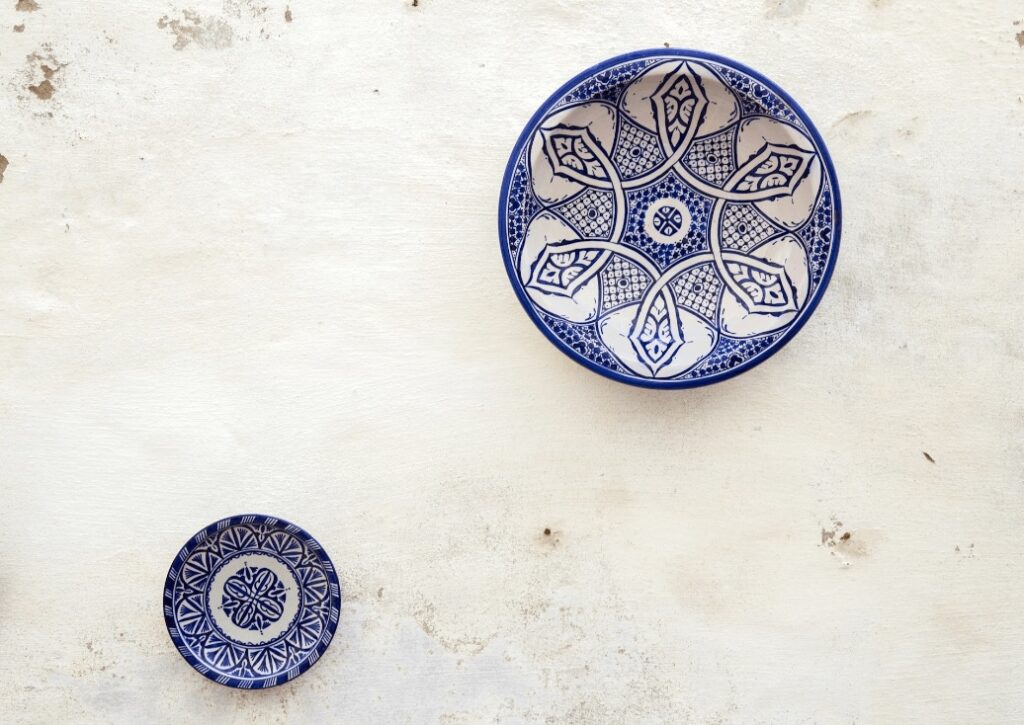
Visit the National Ceramics Museum
Before or after your visit to the Collines des Potiers, be sure to pay a visit to this fascinating museum to learn more about Morocco’s artisan heritage. It’s home to an impressive collection of ceramic treasures and explains what sets Safi’s products apart.
In addition to vases, bowls and platters, the National Ceramic Museum’s galleries are filled with other functional and decorative wares produced across Morocco. While the descriptive placards are presented only in French and Arabic, the craftsmanship of the displayed works speaks for itself.
After your visit, be sure to ascend to the rooftop terrace. From here, you’ll be rewarded with stunning views across Safi’s medina and the Atlantic Ocean beyond.
The National Ceramics Museum is open from 10 am to 6 pm (closed Tuesdays) and entrance costs 20 DH for adults, 10 DH for students and 3 DH for children.
Relax at the beach
Located just north of the port, Safi Beach offers a respite from the hustle and bustle of the city. It comes alive on weekends with locals swimming, playing football and cooking up a storm.
Safi Beach can be reached via a half-hour walk from Bab Chaaba. Alternatively, you can jump in a petit taxi to whisk you there.
Beyond simply sunbathing and swimming, there are several places where you can rent surfboards or take a lesson in the gentle waves. Be aware that big swells can hit Safi and beginners shouldn’t head out in these conditions.
Surf Safi’s legendary breaks
When the wind and swell align, Safi offers up some world-class waves that draw experienced surfers from near and far.
It has garnered a reputation as a big wave destination but still remains little-visited by international surfers. That is, at least compared to the well-trodden surf stomping ground of Taghazout further south.
If you’re heading to Safi to surf, you can check in with the Safi Surf Club to learn more about the conditions. Alternatively, you can take a lesson with one of their experienced instructors. For advanced surfers looking to push the boundaries, “Le Jardin” provides the ultimate testing ground.
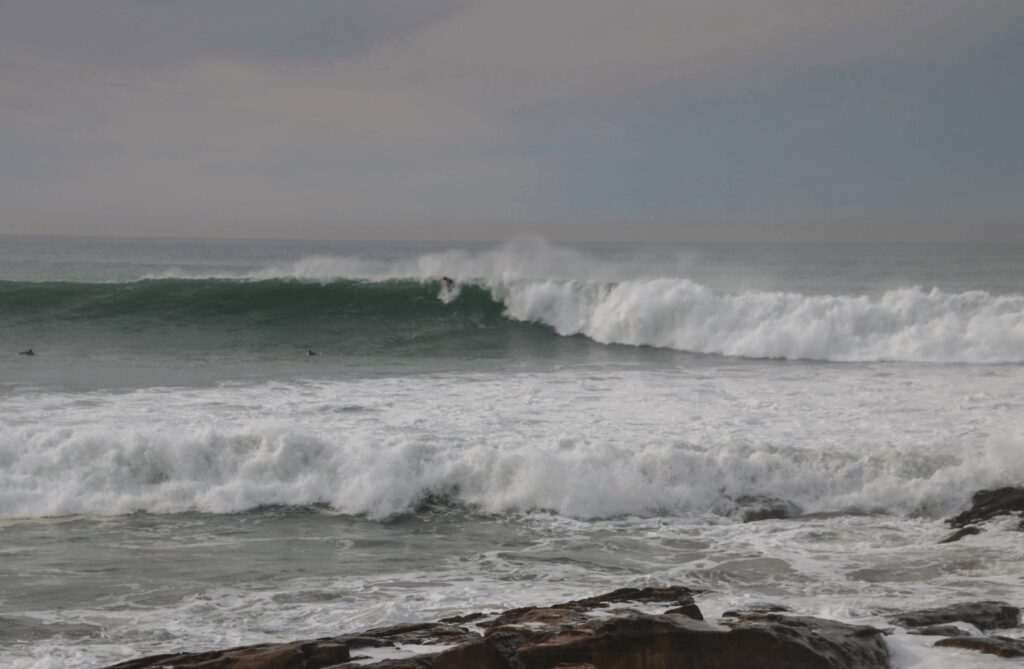
How to get to Safi
By car
Safi is located around two hours’ drive north of Essaouira and 3.5 hours from Casablanca. From El Jadida or Marrakech, the drive is around 2.5 hours.
If you’re self-driving, I recommend renting a car through Discover Cars. It lists all of the best deals from hundreds of providers, as well as offering 24/7 support and free cancellation.
To learn more about driving in Morocco, check out my detailed article here.
If you don’t have your own vehicle, grand taxis regularly make the journey between Essaouira and Safi, departing once full. Private transfers from Marrakech to Safi are also available.
By bus
If you’re travelling independently, the cheapest way to reach Safi from Essaouira is by bus, with CTM offering services throughout the day. There are departures at 10 am, 12 pm, 3:30 pm and 5:15 pm, with the journey between 2 and 2.5 hours.
These buses continue on to Casablanca, so keep that in mind when looking for the vehicle. If you’re travelling from Casablanca to Safi, the bus services are more frequent.
Tickets can be purchased at the CTM website or you can compare buses (and buy tickets) at 12Go or Omio.
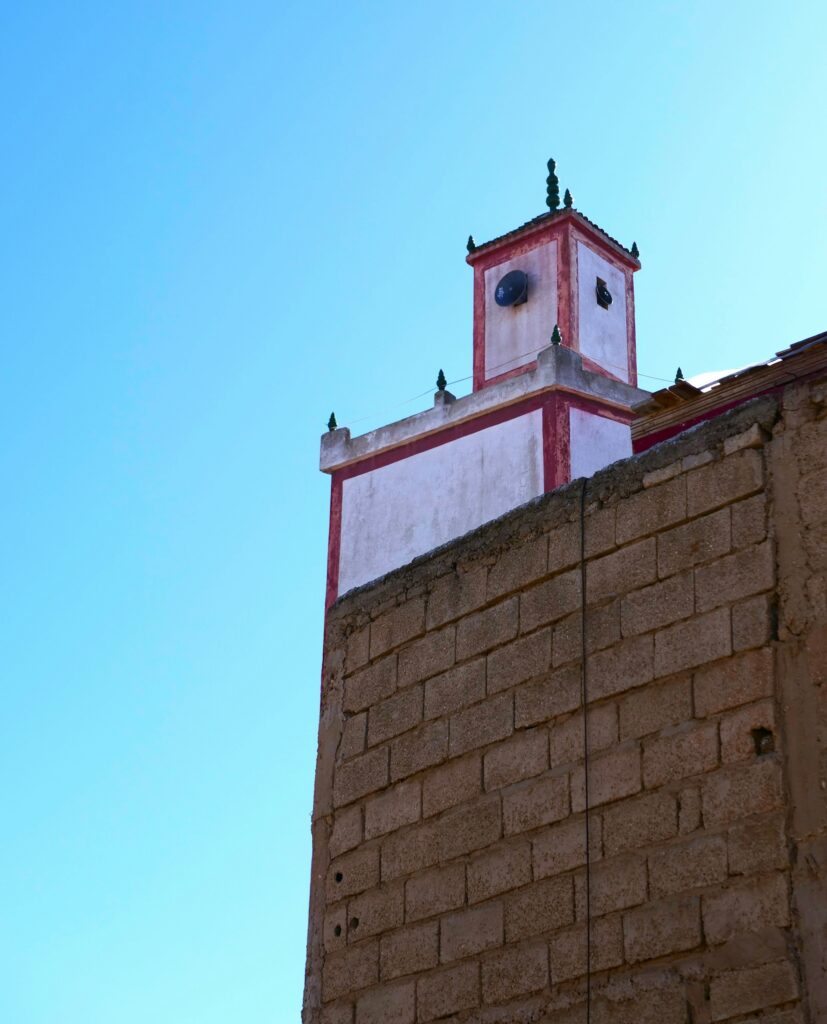
Best places to stay in Safi
Valley Boutique Hotel $$$
Best modern hotel in Safi
Located just outside the city centre, this modern Safi hotel features spacious rooms and suites with a contemporary design. While it lacks the charm of a Moroccan riad, it more than makes up for it with its high-end amenities and amazing swimming pool.
If you’re self-driving, this luxury Safi hotel has plenty of parking on site.
“This is a perfect rest stop while traveling the coast as it was clean, comfortable and easily accessible for a car.” – Branker (read more reviews here)
Riad Le Cheval Blanc $
Best traditional riad in Safi
Offering wonderful views across the medina and the Atlantic Ocean beyond, this affordable Safi riad is beautifully decorated with Moroccan tiles and decor. It offers both twin and double rooms, as well as a single room for solo travellers.
A traditional breakfast is served each morning and included in the rates.
“Great breakfast with an awesome view of the Atlantic and the old town.” – Paul (read more reviews here)
Dar Dada $
Best holiday apartment in Safi
Beautifully decorated, this two-bedroom apartment is perfect for families visiting Safi or those wanting to self-cater during their stay.
It comes with a fully-equipped kitchen and a washing machine, as well as a terrace where you can enjoy panoramic views overlooking the medina. While one bedroom has a double bed, the other has two single beds.
“The interior of the property is amazing, it’s like a piece of art. Very close to port and Safi market.” – Khaleed (read more reviews here)

Best time to visit Safi
With an abundance of sunny days throughout the year, Safi makes for a fantastic destination, no matter when you are visiting Morocco. It enjoys mild temperatures due to its coastal setting, with only occasional rainy days (usually just light showers).
January and February are the coolest months, with average highs around 18°C (64°F) – perfect for a winter getaway! Summer temperatures average around 25°C (77°F) in July and August (although it can get much hotter). However, the sea breezes usually keeping things comfortable.
Keep in mind, August is one of the busiest times to visit Safi when Moroccans are on their annual holidays.
For a quieter experience, consider visiting during the shoulder seasons of April to June or September to October. During these periods, the weather is pleasant and you’ll avoid the peak tourist crowds.

PLAN YOUR TRIP WITH MY FAVOURITE RESOURCES:
Find hotels via Booking
Book tours and attractions via Viator or GetYourGuide
Find a rental car via Discover Cars
Book flights via Kiwi or Booking
Search for buses and trains via 12Go or Omio
Get travel insurance via SafetyWing
Buy a digital eSIM with Airalo
By purchasing through my links, you’ll be supporting my website at no additional cost to you
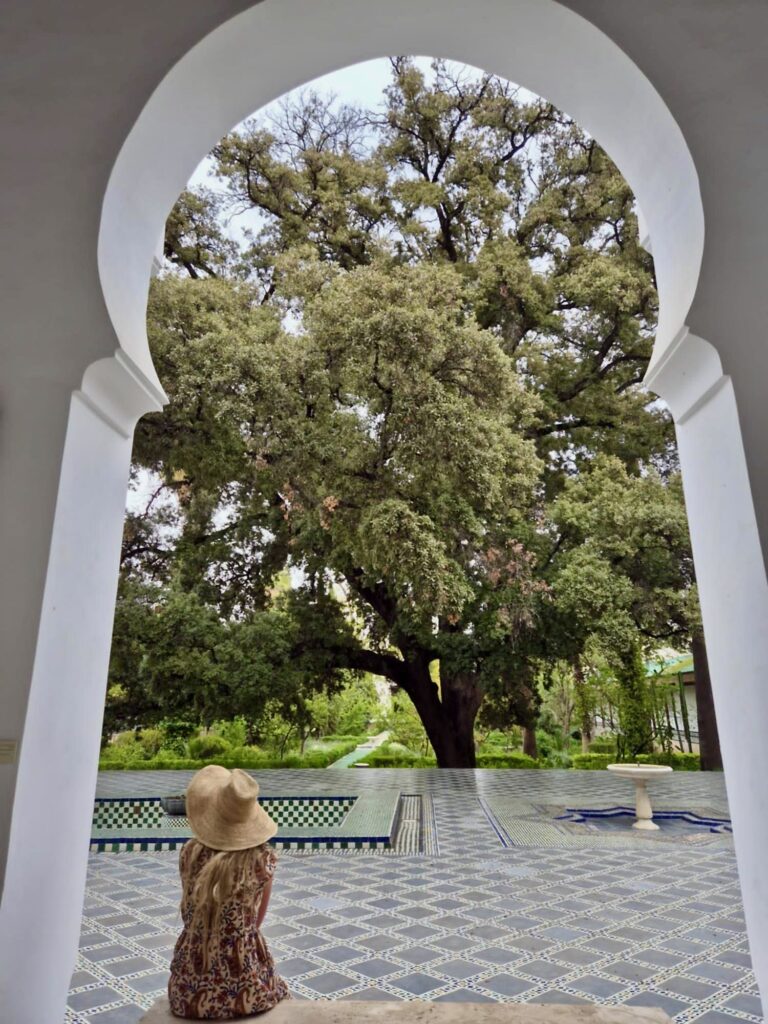
About Me
I’m Malika, a global traveller who first visited Morocco in 2014 before marrying a local and settling down in a little village on the Atlantic coast. Over the years, I’ve developed an intense love for Morocco, its incredible landscapes, storied cities and the exceptionally generous hospitality of its people.
Malika in Morocco is a place to share my years of experience exploring the country, from north to south and from the Atlantic Ocean to the Sahara Desert. As a resource for travellers visiting Morocco, I want to encourage others to experience this captivating destination the way they desire, whether that’s independently or under the expert guidance of local tour operators.
I believe strongly in supporting responsible and sustainable tourism initiatives while inspiring travel experiences that are life-impacting and mutually beneficial for both travellers and locals.
-
Essential Guide to Hiking Mount Toubkal
Thinking about hiking Mount Toubkal? Discover everything you need to know about scaling North Africa’s highest peak, from access to guides and what to expect on the trail. Trekking to the 4,167 metre (13,671 feet) high summit of Mount Toubkal is a bucket list experience for many travellers to Morocco. After all, it is the highest peak in North…
-
7 Romantic Riads and Hotels in Essaouira for a Couple’s Escape
Looking for the most romantic hotels in Essaouira? Discover 7 riads that are perfect for couples seeking an intimate getaway in this whitewashed gem. As Essaouira increases in popularity, it’s starting to give Marrakech a run for its money in terms of amazing riad stays. This coastal city is one of my favourite destinations in Morocco. For…
-
7 Best Family Hotels in Essaouira for a Kid-Friendly Escape
Looking for the best family-friendly hotels in Essaouira? Explore this curated collection of riads, villas and apartments that cater to those visiting Morocco with kids. The oceanside city of Essaouira exudes an easygoing, carefree spirit that feels worlds apart from the frenetic energy of Marrakech and Fes. Drenched in the warm Moroccan sunshine, this former…
-
9 Best Family Hotels in Marrakech for a Kid-Friendly Stay
Looking for the best family hotels in Marrakech? Explore this curated collection of riads, resorts and apartments that cater to travellers visiting Morocco with kids. There’s no denying it – Marrakech is an incredible destination and one of Morocco’s most popular places to visit. But it can also be an assault on the senses and…
-
10 Luxury Hotels in Essaouira for a High-End Coastal Escape
Looking for the best luxury hotels in Essaouira? Explore this curated collection of high-end stays, including beautifully restored riads, dreamy villas and modern retreats. Drenched in sunshine on Morocco’s Atlantic coast, the easygoing town of Essaouira exudes a carefree spirit. Honestly, it feels worlds away from the chaotic energy of Marrakech. I simply love visiting…
-
10 Best Hotels in Essaouira with a Pool for a Summer Escape
Looking for the best hotels in Essaouira with a pool? Discover 10 amazing places to stay in this coastal city, complete with a pool where you can refresh in the hot, summer months. With its enviable coastal setting and golden sweep of sand, Essaouira is a deservedly popular Moroccan destination in the summer months. The…
